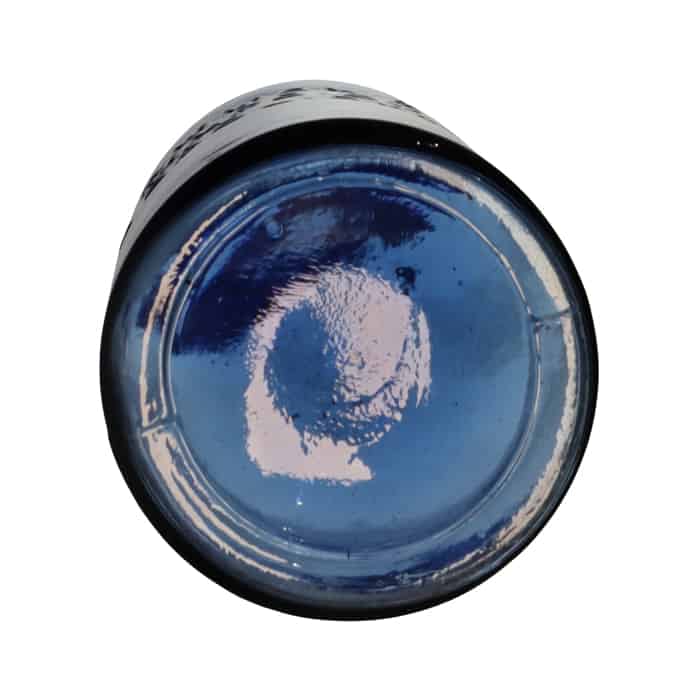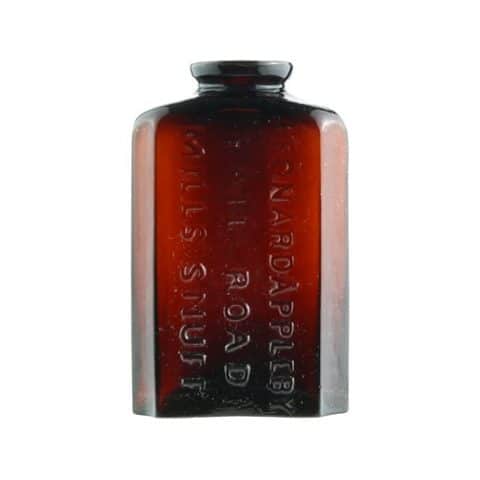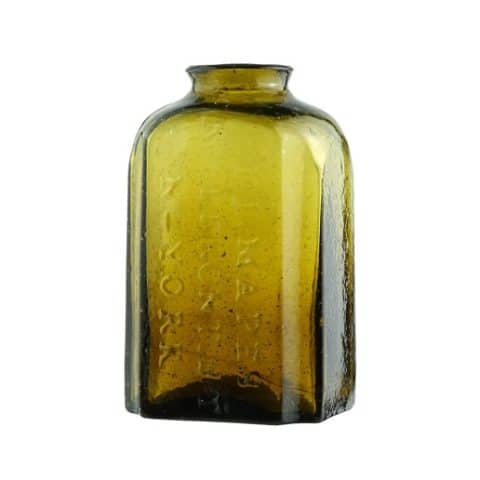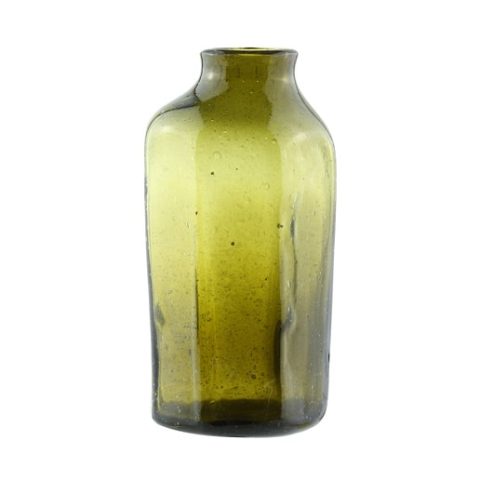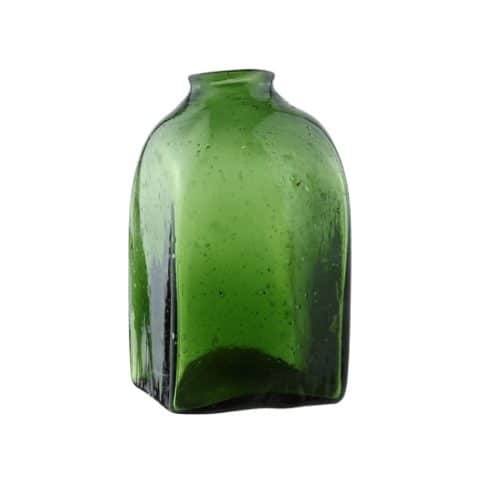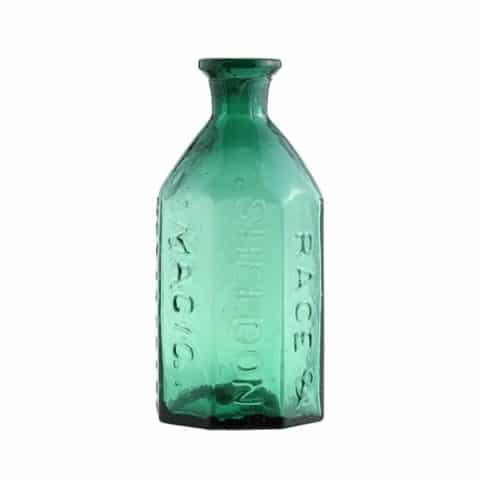KC-51 Ammonia Mnfd. By S.F. Gas Light Co.
Ammonia
Mnfd. By
S.F. GasLight Co.
San Francisco Gas Light Company
San Francisco, California
Cylindrical Blue Utility
Provenance: Eric McGuire Collection
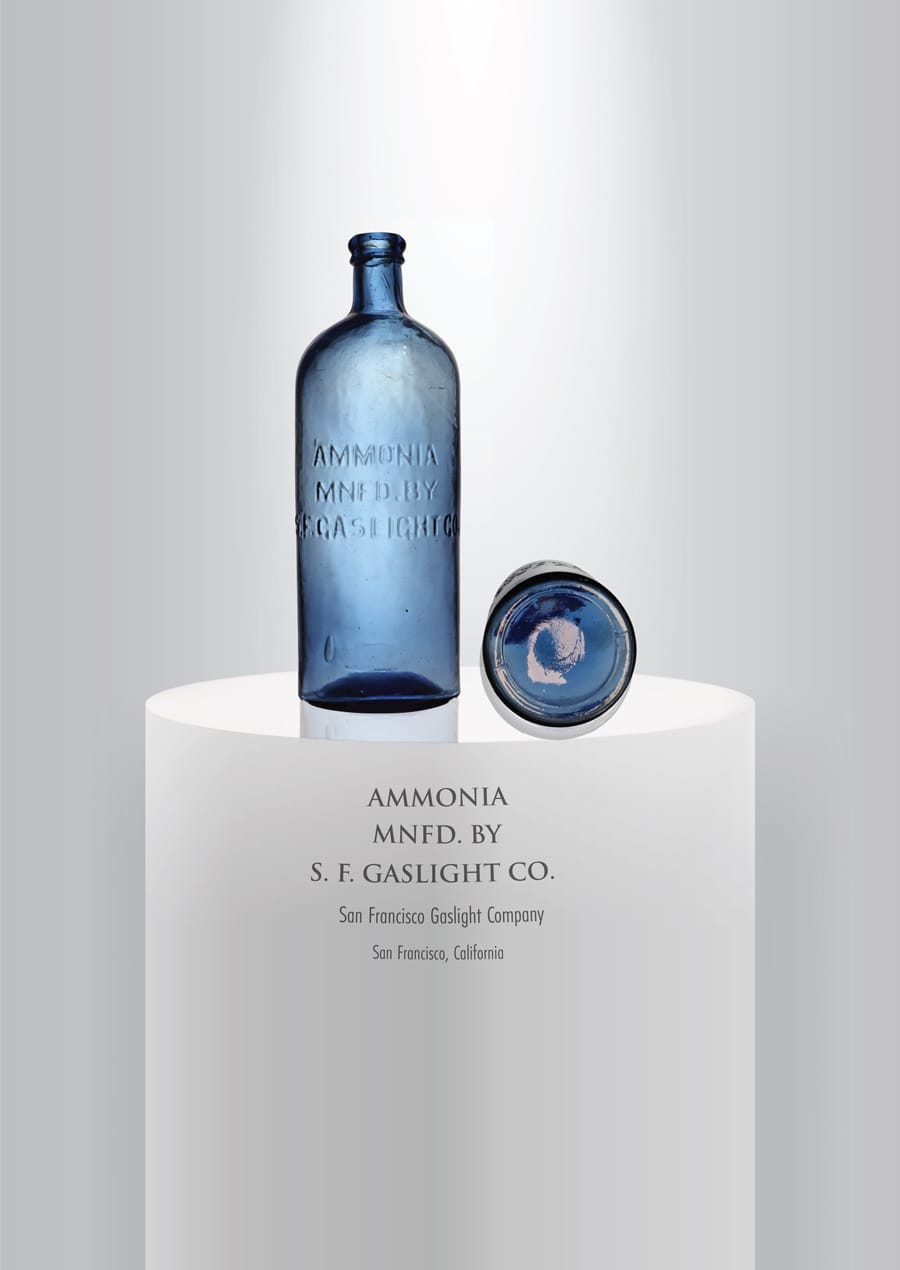
Growth in San Francisco following the discovery of gold in California brought pressure to develop and improve city services. The lighting of streets by gas lights and population growth created an unquenchable demand for gas. This demand and lack of natural gas supply cost $15 per thousand cubic feet. Although the price dropped to $4.50 in the 1870s, this remained a golden opportunity that brought speculators into the windfall business.
Bottle collectors and historians have been left with an interesting array of artifacts from this period. A very popular one with bottle collectors is the San Francisco Gaslight Company bottles, which were used as containers for Ammonia. Five variations of these bottles are known to collectors today. These include a half-gallon, a quart, a slightly oversized quart, and two variations of pint bottles. Our museum example is 10 inches tall and represents a half-gallon. Three lines of embossed sans serif type are featured on the face of the bottle that read, ‘AMMONIA’ (top line), ‘MNFD. BY’ (center line) and ‘S.F. GASLIGHT CO.’ (bottom line). The base is smooth. There is an applied ring mouth.
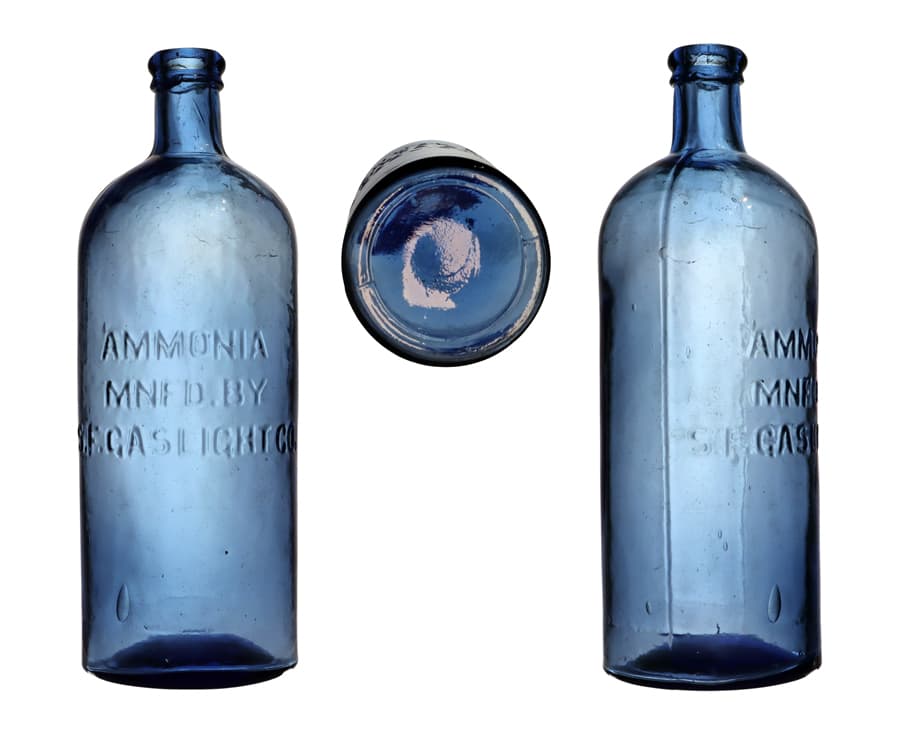
At one time collector Bill Ham had possibly the most complete collection of San Francisco Gaslight Company ammonia bottles. From Bill: At one time I had about 30 colored Gaslight Ammonia’s. At an early Mother Lode Bottle Show in Downieville, we displayed them in a cabinet at Rick and Cherry’s home. Aaron Hill and the late Terry Adams dug a privy in Grass Valley back in the 1990s that contained at least 10 different colored Gaslight Ammonia bottles ranging from a light blue to a pink looking example.
In San Francisco in the 1870s, numerous companies sprung up hoping to provide a profitable natural gas service. These entrepreneurial concerns tried various competitive schemes to gain market share, including merging with competitors. One such merger in 1873 created the San Francisco Gaslight Company by joining the San Francisco Gas Company, City Gas Company and Metropolitan Gas Company. The new plant and utilities were considered the largest of all the lighting companies west of the Missouri River.

The initial gaslight company’s manufacturing facility was at the former City Gas Company natural gas plant in the Potrero District, which had gone into service in 1872. A second manufacturing facility was located at the foot of Laguna Street, which had sufficient waterfront and dock privileges to permit large vessels to dock at the piers. The San Francisco Gaslight Company offices occupied a handsome property on Post Street near Powell, which was restored in later years and still stands in the Marina District. The significant expenditure of operating two plants was made so that if one were destroyed, the other would afford all the services the company’s patrons would require. The company strived to provide private individuals and the city with the best quality of illuminating gas possible at the lowest cost.
The Company’s primary product was natural gas manufactured from coal and delivered by pipeline to buildings and residences for cooling, heating, cooking and light. The oil-to-natural gas conversion process was unreliable, so the company depended heavily on its coal conversion facilities.
The new company’s first major natural gas customer was the Palace Hotel, which opened its ornate doors on October 2, 1875. Although electricity was beginning to be used, the hotel used gas to light its inner courtyard, with 516 gas jets installed in crystal chandeliers.
The gas manufacturing process created a considerable quantity of liquid coal tar residue. These substances had to be used or disposed of at a considerable cost. In that Ammonia can be easily distilled from coal tar, a new industry was formed, and the natural gas plants began manufacturing Ammonia for chemical, mining and household uses. The San Francisco Gaslight Company became a major producer and distributor of Ammonia in the area. Documents revealed that the company was selling Ammonia as early as 1875.

As natural gas fields were developed and transportation pipelines built, the operation of natural gas manufacturing plants became uneconomical, and they were closed. Interestingly, Pacific Gas and Electric Company still uses the original coal-to-natural gas conversion plant site in the Potrero District. However, the facilities were converted to electric generation plants.
Primary Image: “Ammonia Mnfd. By S.F. Gaslight Co.” bottle imaged by Eric McGuire, FOHBC Virtual Museum West Coast Studio.
Support: Reference to San Francisco Gas Light Co. Ammonia Bottles by Bill Ham, Antique Bottle & Glass Collector, March 1994.
Support: Reference to San Francisco Gaslight Company, Museum of the City of San Francisco, San Francisco New Letter, Christmas Number, 1897.
Support: Reference to Poison Bottle Workbook by Rudy Kuhn.
Join the FOHBC: The Virtual Museum is a project of the Federation of Historical Bottle Collectors (FOHBC). To become a member.

